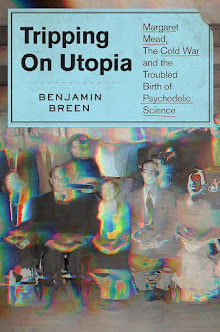"While these Discontents continued, severall Letters past between Queene Elizabeth and Doctor Dee, whereby perhaps he might promise to returne; At length it so fell out, that he left Trebona and took his Iourney for England. The ninth of Aprill he came to Breame… Here that famous Hermetique Philosopher, Dr Henricus Khunrath of Hamburgh came to visit him." - Elias Ashmole, Theatrum Chemicum Brittanicum, (London, 1652), cited in Frances Yates' The Rosicrucian Enlightenment
I'M a bit obsessed with the Elizabethan occult author
John Dee

(even wrote a good chunk of
his Wikipedia page), but I know very little about the man who the famed historian
Frances Yates
considered to be the critical link between Dee and the Continental tradition of European alchemy,
Heinrich Khunrath. Last year I came across some of the book plates from Khunrath's occult work
Ampitheatrum Sapientiae Aeternae (Hamburg, 1595), or "The Amphitheater of Eternal Knowledge," and was floored by their complexity and beauty. Remarkably, only three copies of the first edition of this work are known to exist. The University of Wisconsin Library has been good enough to scan the images of its copy and make them
available online along with an excellent critical history of the book (
here). The same site also offers a good overview of the little that is known about
Khunrath's biography.
 |
| "The Cosmic Rose" |
 |
| "The Hermaphrodite." |
 |
"The Alchemist's Laboratory." Each object bears a Latin motto offering advice
for the alchemical adept. For instance, the still reads FESTINA LENTE
("hasten slowly"), the personal motto of Emperor Augustus. |
 |
| "The Four, the Three, the Two, the One." |
Remarkably these already exceptionally detailed images originally appeared surrounded by cryptic Latin text. Take "The Hermaphrodite" image displayed above, for example:
 |
| Click image for a much larger version. Transcription of the text here. |
A detail from the same image:
 |
Dee's Monas Hieroglyphica
(London, 1564), frotispiece. |
Here we get a sense of the bafflingly complex nature of these images. The figure of the
hermaphrodite as a metaphor for the dualistic nature of the universe and the human body is a common one in alchemical imagery. Likewise, the sun and moon are frequently used to symbolize the male and female natures inherent in different elements (the sun is gold/male, the moon female/silver, etc.) The black peacock labelled "
AZOTH" leads us deeper into Hermetic territory. Azoth was the hypothesized universal solvent, the "ultimate substance" which could transform all elements. Here it seems to be used to convey the union of male and female (and of all elements) which would allow the corporeal human form to transcend to a divine plane (note the symbol of the trinity above the peacock feathers, which resemble diagrams of the
celestial spheres). To top it all off, the "O" in "Azoth" made out of John Dee's
"hieroglyphic monad"!
So what are we to make of all this? Quite a few scholars have examined Khunrath's
Ampitheatre. In her book
The Alchemy of Light, Urszula Szulakowska, for instance, argues that the engravings in Khunrath's texts
are intended to excite the imagination of the viewer so that a mystic alchemy can take place through the act of visual contemplation… Khunrath's theatre of images, like a mirror, catoptrically reflects the celestial spheres to the human mind, awakening the empathetic faculty of the human spirit which unites, through the imagination, with the heavenly realms. Thus, the visual imagery of Khunrath's treatises has become the alchemical quintessence, the spiritualized matter of the philosopher's stone (9).
 |
A 17th century portrait engraving of
Khunrath. |
The images, in other words, invite the viewer to engage in a meditation on the nature of the universe and on the links between the earthly and the divine, the corporeal and the spiritual. Of course, such a statement would be equally true of many other instances of early modern alchemical and Hermetic symbolism. I suspect that a lot of the meaning in these images and the text that accompanies them has actually been lost, due to the fact that alchemical practice depended upon face-to-face interactions (like the one between John Dee and Khunrath) which were never recorded. And this was precisely what was intended - the true secrets of early modern alchemy were intended for a small number of the "elect" and were elaborately concealed in complex and often inscrutable language when they were allowed into printed works.
On the other hand, the visual interest of these magnificent images is arguably all the greater owing to the unknowable mysteries that now surround their creation and meaning.














2 comments:
If you want to learn more about Khunrath and his alchemical/theological contexts check out the research of Peter Forshaw, who has posted a few of his papers online:
http://uva.academia.edu/PeterForshaw/Papers
You'll probably also be interested in his paper on the alchemical reception of John Dee. Forshaw has been working on a book about Khunrath, including a translation. He told me he made some interesting discoveries of liftings from Reuchlin's cabalistic texts.
One last piece of gossip--I recently heard from one of his students who is working on a precursor to Khunrath's alchemical oratory. Exciting research!
Hi Ben, nice looking site and a pleasure to discover someone else interested in the Amphitheatre. I see that Ted has mentioned my shared fascination in Khunrath and Dee. Good luck with your research. All best wishes, Peter
Post a Comment